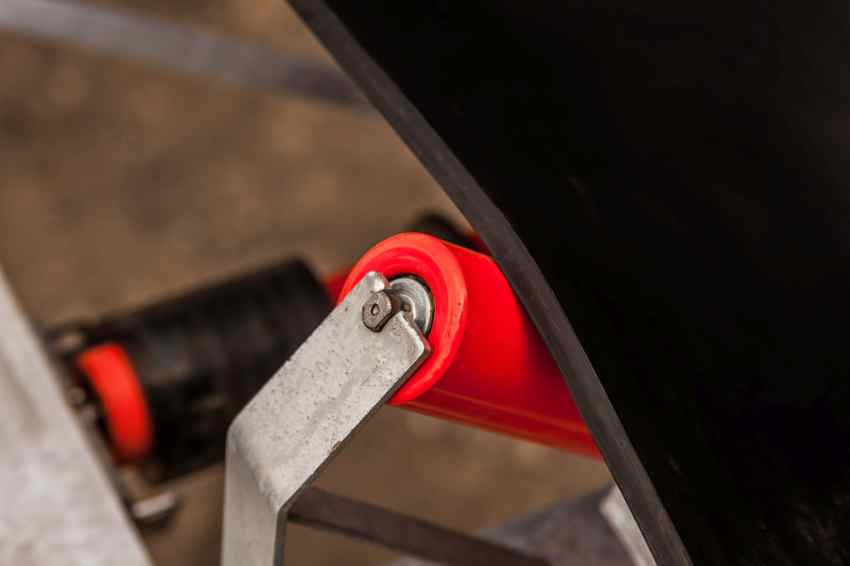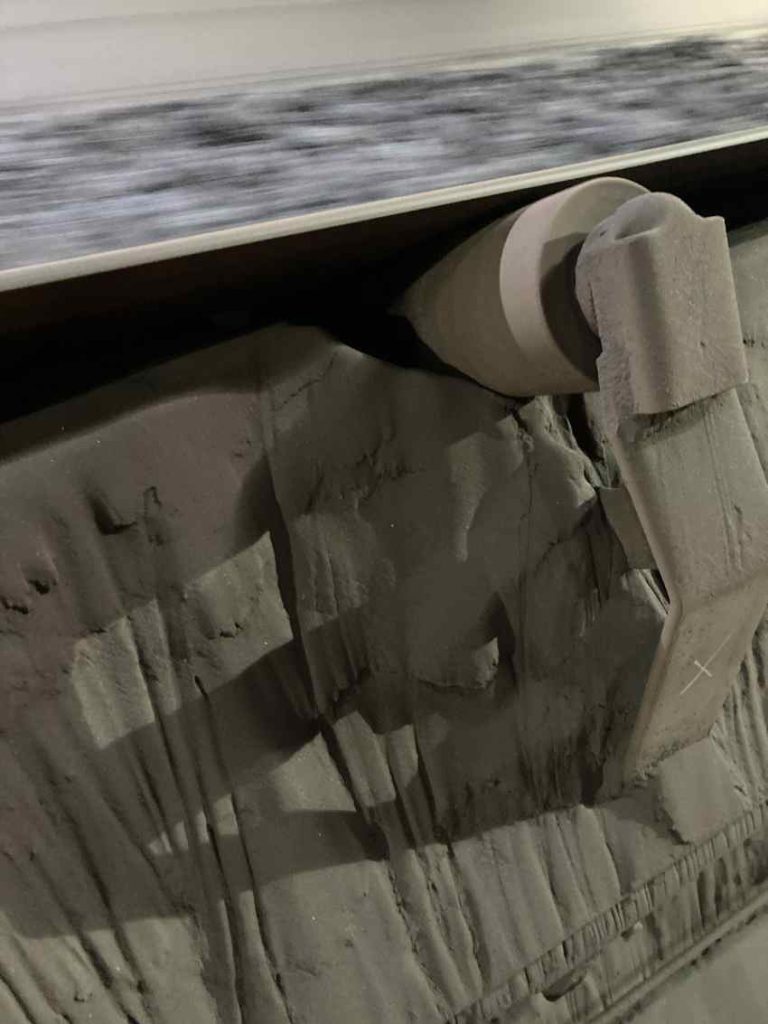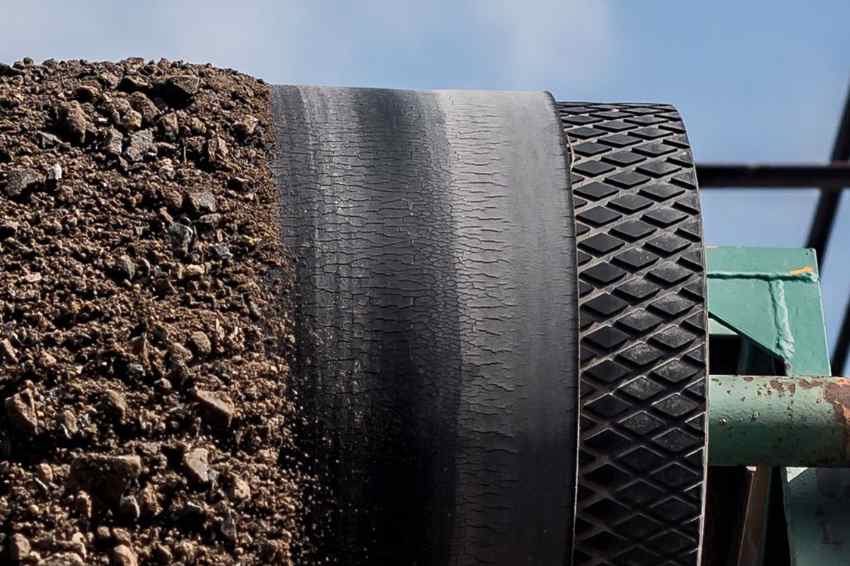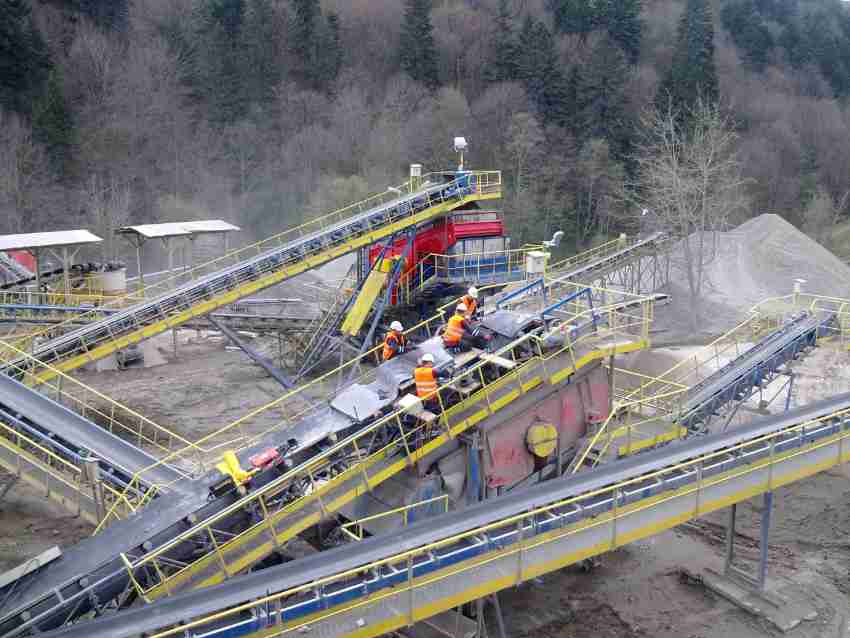Rob van Oijen, Manager Application Engineering for Fenner Dunlop Conveyor Belting in The Netherlands, provides expert advice on some of the most common problems facing conveyor operators.
Easy Engineering: What is the best way to deal with recurring rip, tear and impact damage problems?
Rob van Oijen: Because of the huge disparities between the types of materials being conveyed, the design of the conveyor systems and their working environments, there is no ‘silver bullet’ answer to this question. In my experience, it is probably easier to start with what will almost certainly NOT solve the problem. The most common misconception is that making the belt thicker by increasing the cover thicknesses and/or the number of plies will help. The fact is that belts that are too thick for the design of the application can cause problems such as excessive rigidity (lack of troughability) and steering and handling difficulties. The same applies to increasing the tensile strength. It is important to remember that for every step increase in tensile strength, the pulley and drum diameters need to be increased by 25%. If this action is not taken then the belt carcass may fail due to dynamic stress.

The only proven solution to rip, tear and impact damage is to fit a conveyor belt (such as Fenner Dunlop UsFlex or Ultra X) that has been specifically engineered to withstand the kind of punishment that would destroy a normal belt. Although they have a higher purchase price, they are unquestionably the most cost-effective solution by far. The best examples use uniquely designed fabric plies that allow the nylon strands to stretch. As the trapped object is being pulled through the belt, the strands gather into a bundle that eventually becomes strong enough to stop the belt in its tracks rather than propagate over a much long distance. The design of the fabric also allows the energy created by heavy impact to be dissipated over a much wider area. However, beware of cheap imitations. As laboratory testing consistently reveals, they are cheap because they are made using cheap, low-grade materials with the result that their rip, tear and 1impact resistance is 60% less than the genuine article.
E.E: What steps can operators take to extend conveyor belt life?
RvO: In addition to having a good quality conveyor belt in the first place, regular, preventive maintenance, good quality components such as idlers and rollers and a clean working environment are all essential factors that help to extend conveyor belt life. Other factors include making sure that any scrapers that are fitted are correctly adjusted and drum linings (where applicable) are in good condition. Belt tracking is also important because a mis-tracked belt can limit belt life and contribute to uneven wear. The primary cause of mis-tracking is often found to be material build-up on the bottom side of the conveyor belt or drums and pulleys.
Another key element is to have the correct belt specification matching the conveyor design. Unsuitable belt types may behave badly and limit its life span. Quality belt suppliers will have engineers to verify belt selection when provided with sufficient information on the conveyor design and material properties.

E.E: What can operators do to minimise conveyor lifecycle costs?
RvO: The best way to minimise conveyor lifecycle costs is to choose belts based on their durability, suitability and longevity (whole life cost) rather than for short-term ‘economic’ or budgetary motives. It really is as simple as that. Experience shows, without doubt, that the price of the belt will invariably be reflected in both its quality of performance and the length of its operational life. The ‘lower labour costs’ argument that some use to explain extremely low prices is a fallacy because the labour element accounts for as little as 5% of the production cost. By comparison, raw materials make up some 70% of the cost of producing a conveyor belt so the only way to make a low-price belt is to use low-price (low grade), unregulated raw materials such as carbon black made by burning old car tyres, minimising or completely omitting key additives (such as antiozonants to prevent ozone & UV damage) in the rubber and using low-grade inner synthetic plies.
From an operational view, most good quality belts can be left to do their job once installed. However, it is still vital to ‘walk the conveyor’ on regular basis, checking for broken parts or other irregularities. Very often, external influences like broken idlers or scrapers, material build-up on pulleys, or belt becoming lodged behind skirting cause premature belt failure, which could have been avoided with regular inspections.
E.E: What can be done to minimise dust emissions and product spillage?
RvO: In my experience, dust emissions occur at the loading point, at the discharge or due to dust emissions from cracks in the rubber covers of the conveyor belt caused by exposure to ozone pollution and ultraviolet light. As for the latter, atlow altitude, ozone becomes a pollutant that is created by the photolysis of nitrogen dioxide (NO2). Exposure is unavoidable because even tiny traces of ozone in the air will attack the molecular structure of rubber, increasing the acidity of carbon black surfaces.
Small transversal cracks begin to appear in the surface of unprotected rubber at a surprisingly early stage. Although the cracks may not seem to be a big problem, the rubber quickly becomes increasingly brittle and the cracks deepen under the repeated stress of passing over the pulleys and drums.

Ultraviolet light is also accelerating the deterioration of the rubber. Fine dust penetrates the cracks caused by the effects of ozone and UV and is then discharged (shaken out) on the return (underside) run.
Ozone and ultraviolet damage is relatively easy to prevent by including antioxidants within the rubber compound mixing process. Unfortunately, lots of ‘economy’ belts sold in Europe, Asia and Africa have virtually no in-built protection. My advice is to always make ozone & UV resistance an obligatory requirement when selecting any rubber conveyor belt.
Dust emissions at discharge occur from agitation of the material, which can usually be controlled with proper chute design with dedusting equipment, use of loading spouts and limiting ‘free’ movement of material. Dust emissions at the belt loading can be reduced by proper chute design, projecting material flow in the belt movement direction and limiting free-fall height and velocity differences. Enclosures around the loading zone with proper sealing to the belt and equipped with dedusting devices allow materials to settle.
Product spillage either occurs around the loading area, due to overloading and/or due to misalignment of the belt. Misalignment is mostly a maintenance issue while overloading is a process issue. Improper sealing around the loading also allows materials to escape while misaligned or mismatched idlers stations cause belt height fluctuations and opening of the seal.
E.E: What can be done to prevent repeated splice joint failures?
RvO: It is estimated that splice joint problems account for some 80% of unplanned stoppages to carry out repairs, which is a statistic that does not surprise me. The cost of repairing splice joints and the cost of lost output is considerable but should not be necessary at all. In my experience, the biggest causes of splice problems are shortcomings in the quality of the conveyor belt itself, the materials used to join the belt and the quality of the workmanship.

For example, low-grade rubber and poor adhesion between the inner plies are both faults commonly found in the low-grade ‘economy’ belts that I referred to in an earlier answer and make the job difficult even for the most skilled splicer. The cost of splice joint repairs and the associated lost output should both be included when calculating the whole life cost of a conveyor belt. As the old saying goes, price is what you pay but cost is what you spend.
E.E: Which aspects of managing a conveyor installation are most frequently overlooked by operators?
RvO: In my experience it is regular inspection of the whole conveyor system that is most frequently overlooked by operators. As mentioned earlier, regular, ‘up-close’ inspection is essential in order to identify and correct problems as early as possible. This includes making sure that the whole conveyor and its components are kept as clean as possible. By keeping components clean, they require less maintenance whilst functioning as intended.My doctrine is simple: “It is not what you expect, it is what you inspect”.

Rob van Oijen
Rob has specialised in conveyors for over 17 years, supporting businesses throughout Europe, Africa, the Middle East and South America and is widely regarded as being one of the best application engineers in the conveyor belt industry
